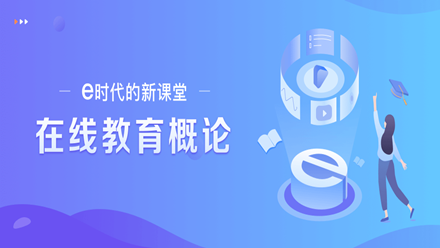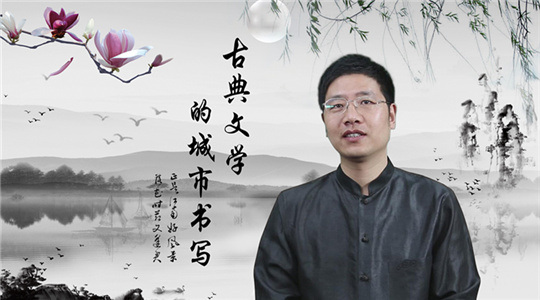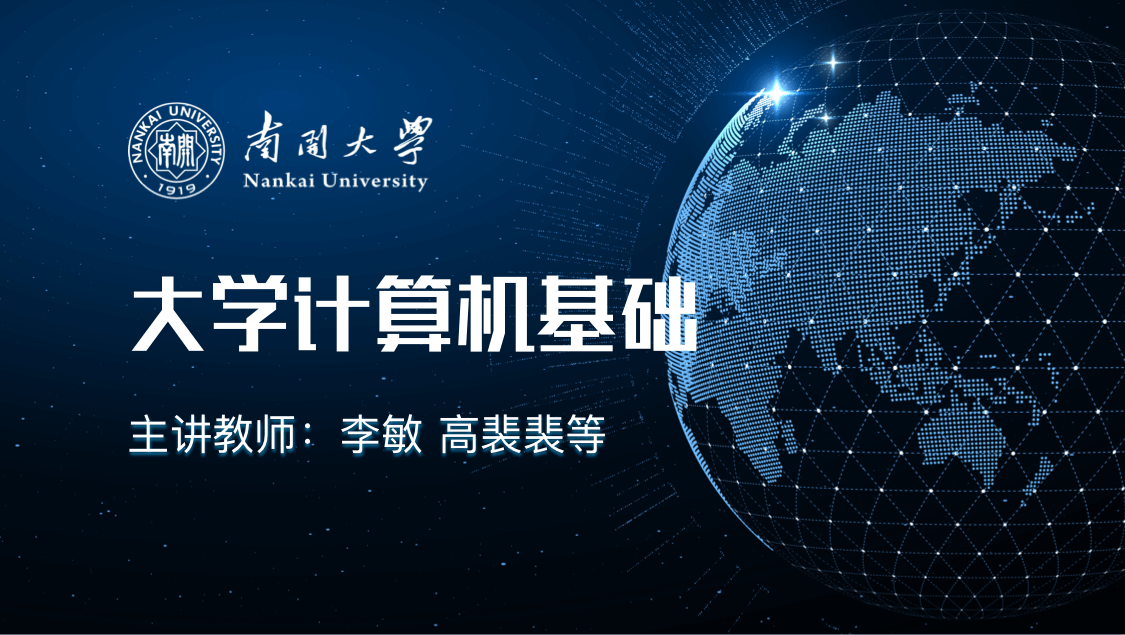
当前课程知识点:e时代的新课堂——在线教育概论 > 第三章 高校在线教育进行时 > 3.3.1当前的教学问题 > 3.3.1当前的教学问题
各位老师好
Hello, everyone.
我是清华大学的于歆杰
I'm Yu Xinjie from Tsinghua University.
今天这一小节我们来讨论一下
In today's section, we will discuss
混合式教学的好处在哪
the benefits of blended teaching.
那我们先来回顾一下
First, let's review
你不用混合式教学
the major problems you will have to face
当前的传统教学模式
when using traditional teaching methods
面临的主要问题是什么
instead of blended teaching.
我相信在座的老师
MMy guess is that most people here,
或者说听众观众这些老师
as well as other audiences and listeners,
你都是在大学上课的老师
are teaching in colleges or universities.
我接下来说的各种主要问题
I believe tThe major problems I will discuss later
你在你的课堂
usually appear
或者你在你学校的课堂里
in your course or
都会或多或少的面临到
in your classroom.
第一
Here is the first problem.
大多数情况下老师上课都是在读PPT
Most lecturers only hand out their slide presentations in class,
如果说是在读PPT的话
which means
那你几乎无反馈的一直是在讲课
they are giving lectures without feedback.
这个当然没有什么大毛病
Of course, this is not a big deal,
你把知识正确的讲出来了
as you are explaining the knowledge properly.
但是所造成的一个效果
However, the consequence is that
就是学生一直是在几乎没有反馈的听
students are listening without thinking.
所以基本上来讲
So basically,
这个课堂的知识流是单向的
there is only a one-way transmission of knowledge in your lecture.
我们往悲观的角度来讲
From a pessimistic point of view,
这是一个满堂灌的授课模式
this is a spoon-feeding method of teaching.
很多课堂现在都是这样
It's a common problem in today's classrooms.
除此之外呢
Next, let’s talk about the second problem.
由于咱们国家高等教育的扩招
In China, the enrollment of students is expanding at colleges and universities,
而相应的专任教师数量
while there is no significant increase in
并没有得到显著的增加
the number of full-time teachers.
所以就使得大容量班级的授课
As a result, teaching large classes
近期依然会是主流模式
will remain as the mainstream teaching method in the near future.
比如说像我们电路原理
Take the circuit theory course as an example.
在清华大学本科在读生
the ratio of undergraduates to
和专任教师的生师比
full-time teachers at Tsinghua University
大概是5:1到6:1
is roughly 5:1 to 6:1.
这个比例已经很低了
This ratio is already very low.
但是我们电路原理这样的核心课
However, as a core course, circuit theory
多年来一直是80人以上的班级
has long been taught in large classes
大班授课
of over 80 students.
还有第三呢即使是现在各个学校
Next is the third problem. Even though
智慧教室或者校园信息化建设如火如荼
the Smart Class and information-based informationized campuses are developing vigorously across colleges and universities,
但是我相信在近期依然会是稀缺资源
I still believe they will be scarce resources in the near future.
它不会是造成对一个学校里边教室
It's not possible for most classes
大量的都是智慧教室
to be Smart Classes
做不到的
in a school.
所以就使得当前这个教学
Therefore, at present,
是这么样一个情况
the most common
绝大多数情况下
teaching method is teachers
都是大容量班级在普通教室里讲课
teaching a large class in an ordinary classroom,
老师把知识正确的讲出来
where he or she just directly explains the knowledge.
这是现状
This is the current situation.
这个现状造成的主要问题是什么呢
Such a situation may cause
两点
two problems.
第一学生是不知道自己的学习情况的
Firstly, students don't understand their learning conditions.
学生老觉得听懂了
They think they have understood the teacher.
老师都在说中文
Since the teacher speaks their language,
我听会儿睡一会儿
they may take the chance to switch off for a while,
睡醒了老师说的话我也能听懂
and believe that they won't miss anything.
所以就导致学生对于课堂上自己哪没听懂
In this case, they can't figure out what they don't understand
他是不明白的
during class,
做作业这个事
and after class, they
相互之间借鉴一下也能做上来
can finish their homework with the help of their classmates.
所以学生第一次传统授课模式下
As a result, in this traditional teaching method,
学生第一次知道自己哪没明白
students can't figure out what they don't understand
期中考试了
until the mid-term
第二次期末考试了
and final examinations.
所以学生在听课过程中
During class, they
不能知道自己的学习情况
can never understand their learning situation.
这是当前教学最主要的问题
This is the most serious problem with the current teaching method.
除此之外当然老师也不知道
What's worse, lecturers don’t know their students' learning situation either.
老师经常会主动地说
During class, the lecturer will often ask
同学们大家听懂了吗
"dDo you understand?
有不懂的地方打断我一下
If you have any questions, just interrupt me.
这道题不会同学举一下手
If you don't understand how to work it out, please raise your hand."
那各位老师
But I want to ask you all,
在你实际授课中你问出这样的问题
when you say this during your actual lectures,
有同学会举手吗
do any students actually raise their hands?
很少很少
I’m guessing very few of them, right?
所以这样的读PPT 大班授课
So, with the current situation
和智慧教室稀缺的这么一个
the lecturer just explains the content of slides to a large class of students,
当前的主要场景
and the Smart Class is rarely seen,
就导致了老师和学生
which results in neither the lecturers nor students
对于这个教室里真正发生了什么
knowing what actually happened
相互之间是不知道的
in the classroom.
那怎么办呢
How should we solve these problems?
最近有了很多改变
A lot of changes have been takening place recently.
首先我们说环境在改变
Firstly, the situation is changing.
优质教育资源逐渐普及化了
High-quality educational resources are becoming more and more popular.
比如说教育部在十二五期间
For example, during China’s 12th Five-Year Plan, the Ministry of Education
做了4000门的精品开放课
made 4,000 excellent open courses,
包括1000门精品资源共享课
including 1,000 excellent resource sharing courses
和3000门的精品视频公开课
and 3,000 excellent video-based open courses.
所有这些课程的全程授课录像
The complete-process videos,
真实的课件 作业题和考试题
real courseware, as well as homework and test questions of all these courses
全部在网上公开了
were published online.
这是十二五的
This is what happened during China’s 12th Five-Year Plan.
十三五期间
During China’s 13th Five-Year Plan,
教育部计划要做3000门
the Ministry of Education is plansning to make 3,000
国家级精品在线开放课
national-excellence open online courses
还有各个省级市级校级
and other exceptional excellent courses at the provincial, municipal and school levels.
所以优质教育资源不再稀缺了
So high-quality educational resources are no longer scarce.
除此之外
What's more,
最近这三五年来
In the last three or five years,
移动互联时代
the mobile internet
已经飞速地取代了危机互联时代[未查到 自行翻译]
has made incredibly rapid developments.
各位老师
Everybody,
你现在每天中60~70%
I guess 60 to 70 percent or an even higher percent of
甚至更多的上网行为
your daily online time
不就是拿着手机在划拉吗
is spent on your cellphone.
所以这件事已经成为你生活中
So using mobile internet has become
非常重要的一步
a very important part of both teachers
那么也成为学生生活中非常重要的一步
and students' daily lives.
它势必会对教学或者说课堂教学
It will definitely have a far-reaching influence on
产生深远的影响
teaching, or more specifically, classroom teaching.
还有更重要的是
What's more important,
我们的学生我们的施教对象
the students we teach
已经发生了非常巨大的改变
have changed a lot.
今年是2018年
Those who were enrolled in 2018
现在入学的学生大量的已经是00后了
were mostly born after 2000.
我们老说00后是互联网的原住民
As we often say, those born after 2000 are natives of the internet,
我们是移民
while we are immigrants of the internet.
那移民比起原住民来讲
What's the major difference between
主要的区别在哪呢
natives and immigrants?
各位老师不知道你了不了解00后学生
Do you know the apps or websites
在手机上最常玩的APP
that are most visited by
或者说视频网站最常看的网站是什么
your post-2000 students on their cellphones?
那么大家不妨看一看
If you take a look at
你的学生00后的学生
the form of the videos
他最常看的视频网站上的视频
on the video websites
是怎样一个形态
most visited by these students,
你就会发现大量的弹幕
you will see a lot of real-time comments
成批的弹幕劈头盖脸地在屏幕上飞过
flying cross the screen like bullets.
它跟文字图像声音动画重叠的出现
They just emerge together with words, sounds, images and animation.
那你作为一个
As a traditional
传统意义上的认知主义学习者
cognitive learner,
你会觉得这怎么能受得了
you can hardly bear
我怎么可能了解
or understand that.
但是00后的学生就是这样学习的
But it's exactly the learning style of students born after 2000.
他们天生就是一个建构主义的学习者
They are born to be constructivist learners.
他们天生就习惯于获取碎片化的信息
They are accustomed to acquiring fragmented information
在头脑中建构起一个自己的认知
and completing their own cognitive construction in their brains.
这是学习习惯
This is their learning habit.
除此之外学生的信息来源丰富化了
In addition, students have more information sources.
他除了来你这听讲
Besides your class,
它可以从各个不同地方来获取知识
they can acquire knowledge from many other places,
wiki、Google Scholar
such as Wikipedia, Google Scholar
等等等等各种信息
and so on.
-混合式教学该怎么做?与清华老师一起聊聊
-看清华老师如何进行大班混合式教学
--Video
-如何做好混合式课堂的互动
--Video
-与清华大学老师聊聊慕课独特的教学设计
-“挑战60s”授课短视频大赛
--Video
-与清华大学老师聊聊慕课的制作与运营
--Video
-1.1在线教育发展现状
--html
-1.1.1在线教育带来了e时代的新课堂
-1.1.2师生说
--1.1.2师生说
-1.1.3我国在线教育的特点
-1.2什么是在线教育
--html
-1.2.1概念解析
-1.2.2教育的技术发展史
-1.2.3在线教育的五要素模型
-1.3在线教育对教师的机遇与挑战
--html
-1.3.1机遇篇
--1.3.1机遇篇
-1.3.2挑战篇
--1.3.2挑战篇
-1.4在线教育发展的历史
--html
-1.4.1二十世纪的发展
-1.4.2二十一世纪的发展
-1.4.3在线课程三要素
-1.4.4虚拟教育组织
-1.5课程内部体系和外部关系
-第一章 解读在线教育--单元习题
-讨论题
-2.1数字时代带来教育变革
-2.2在线教育更适应学生的学习需求
--html
-2.2.1教育需求的发展
-2.2.2学习风格与学习类型
-2.2.3多模态数据分析学生学习行为与需求
-2.2.4教育目标
-2.2.5拓展学习时空,促进深度学习
-2.2.6自主学习系统的案例分享
-2.3在线教育帮助教师成长
-2.4学校和国家为什么要做在线教育
-单元习题--作业
-3.1高等学校在线教育发展
-3.1.1学校现状
-3.1.2平台与联盟
-3.2不同类型的教师都能得益于混合式教学
-3.3混合式教学的好处
-3.3.1当前的教学问题
-3.3.2教师和学生的收益
-3.4混合式教学的关键细节与常见误解
-3.4.1关键细节一
-3.4.2关键细节二
-3.4.3关键细节三
-3.4.4误解篇一
-3.4.5误解篇二
-3.5智慧教学工具的发展
-3.5.1综述篇
--3.5.1综述篇
-3.5.2雨课堂的诞生
-3.5.3雨课堂的功能
-3.5.4课堂教学需要雨课堂
-3.5.5雨课堂解决面授时间紧张的问题
-3.5.6雨课堂解决课前课中课后的学习效果问题
-3.5.7课前课中课后雨课件设计要点
-第三章 高校在线教育进行时--单元习题
-讨论题
-讨论题
-4.1教育实践的展望(一) 教育创新
-4.2教育实践的创新(二) 教育技术与决策
-4.3教育理论的热点趋势
-第四章 在线教育的未来--单元习题
-讨论题
-5.1邓俊辉老师《数据结构》与《计算几何》教学案例
--html
-5.1.1慕课制作与使用心得(一)
-5.1.2慕课制作与使用心得(二)
-5.2张瑜老师《思想道德修养与法律基础》教学案例
--html
-5.2.1教学理念与混合式教学的主要环节
--Video
-5.2.2章节实例
-5.3杨芳老师《大学英语》教学案例
--html
-5.3.1混合式教学设计心得
-5.3.2 University单元教学设计
-5.4于歆杰老师《电路原理》教学案例
--html
-5.4.1小容量班级完全翻转课堂
-5.4.2大容量班级部分翻转课堂
-5.5郑莉老师《C++语言》教学案例 雨课件样例及校内教学心得分享
--Video
-单元习题--作业





